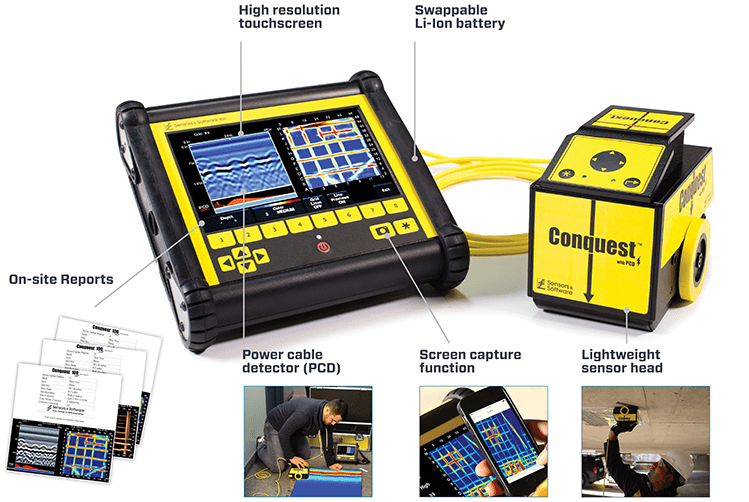RainierGPR Service Areas: Comprehensive Insurance Coverage for Concrete Scanning
Concrete Scanning: A Crucial Step Towards Guaranteeing Architectural Integrity and Security
In the realm of building and construction and infrastructure maintenance, the relevance of concrete scanning can not be overstated. This thorough process holds the key to introducing potential hazards concealed beneath the surface area of relatively solid frameworks. By utilizing sophisticated innovation and methodologies, concrete scanning functions as an essential tool in guaranteeing that the honesty and security of buildings and bridges are supported to the highest possible requirements. However, past its surface-level ramifications, the role of concrete scanning expands far deeper than meets the eye.
Importance of Concrete Scanning
Concrete scanning plays a critical role in making sure the architectural integrity and security of structures and infrastructure tasks. By using innovative technologies such as ground-penetrating radar (GPR) and electromagnetic induction, experts can non-destructively inspect concrete frameworks to detect prospective flaws, gaps, ingrained things, and reinforcement layout. This process allows early detection of anomalies that might endanger the security of a structure, avoiding expensive problems and making certain the security of passengers.
Before drilling, reducing, or coring into concrete, scanning aids identify the specific places of rebar, post-tension cables, and various other embedded elements, lowering the danger of unintentional hits that might lead to architectural weaknesses. In addition, concrete scanning aids in top quality control by confirming the density of concrete covers and spotting any kind of disparities that might affect the total sturdiness of the structure.
Innovation for Concrete Inspection

Advantages of Very Early Discovery
Timely detection of architectural concerns can significantly mitigate threats and guarantee the longevity of construction projects. By identifying potential troubles at an early stage in the building process, stakeholders can take aggressive measures to address concerns before they intensify into larger and much more expensive issues. One of the key benefits of very early detection is the prevention of architectural failings, which can present significant safety and security threats and cause job hold-ups and economic losses.
Moreover, early detection permits timely fixings and upkeep, which can help expand the life-span of the framework. By attending to problems promptly, building and construction groups can prevent expensive repairs and even the need for premature substitute of structural elements. This proactive method not just saves time and money but additionally enhances the total safety and security and durability of the construction project.
Furthermore, early detection can boost job preparation and decision-making by offering stakeholders with valuable understandings into the condition of the structure. Armed with this information, task supervisors can make enlightened selections regarding construction techniques, products, and timelines, bring about more efficient and successful job outcomes.
Making Certain Structural Security
Guaranteeing more info here the structural stability of a construction job is extremely important to its security and long life. Structural security describes the capability of a structure or framework to maintain its kind and function under numerous lots and ecological conditions. To achieve this, extensive analysis and tracking of the framework are vital. Concrete scanning plays a vital role in making sure structural security by finding possible concerns such as voids, delamination, or reinforcement rust that might compromise the stability of the framework gradually.
By using innovative scanning technologies like ground-penetrating radar (GPR) and electromagnetic induction, construction experts can non-invasively evaluate concrete frameworks to identify areas of concern under the surface. This positive method permits the very early discovery of problems or weaknesses, making it possible for prompt fixings or support to stop structural failures.
Normal concrete scanning throughout different building and construction stages and throughout the life cycle of a framework can assist preserve its stability, alleviate dangers, and make sure the safety of passengers. By focusing on architectural stability through concrete scanning, construction jobs can boost their resilience and sturdiness, eventually adding to higher security and durability.
Preventing Important Failings
Applying routine assessments, such as concrete scanning, can disclose concealed flaws like gaps, cracks, or rust that might jeopardize the honesty of a framework. By making use of innovative scanning innovations like Ground Penetrating Radar (GPR) or Concrete X-ray, engineers can non-destructively assess the problem of concrete and identify weak factors that need support or repair work.

Final Thought
To conclude, concrete scanning plays a vital function in guaranteeing structural stability and security by utilizing sophisticated technology for very early discovery of possible issues. This positive approach assists protect against website link crucial failures and ensures the stability of structures. It is vital to prioritize concrete examination as a common technique to safeguard the long life and security of structures and framework.
Concrete scanning plays a crucial function in ensuring the structural integrity and safety of buildings and facilities tasks. In addition, concrete scanning aids in high quality control by verifying the thickness of concrete covers and identifying any type of disparities that may affect the general sturdiness this post of the framework. Concrete scanning plays a crucial duty in making certain structural security by detecting prospective problems such as spaces, delamination, or support rust that can jeopardize the honesty of the structure over time.

In final thought, concrete scanning plays an essential function in ensuring architectural stability and safety by making use of sophisticated technology for very early detection of potential issues.